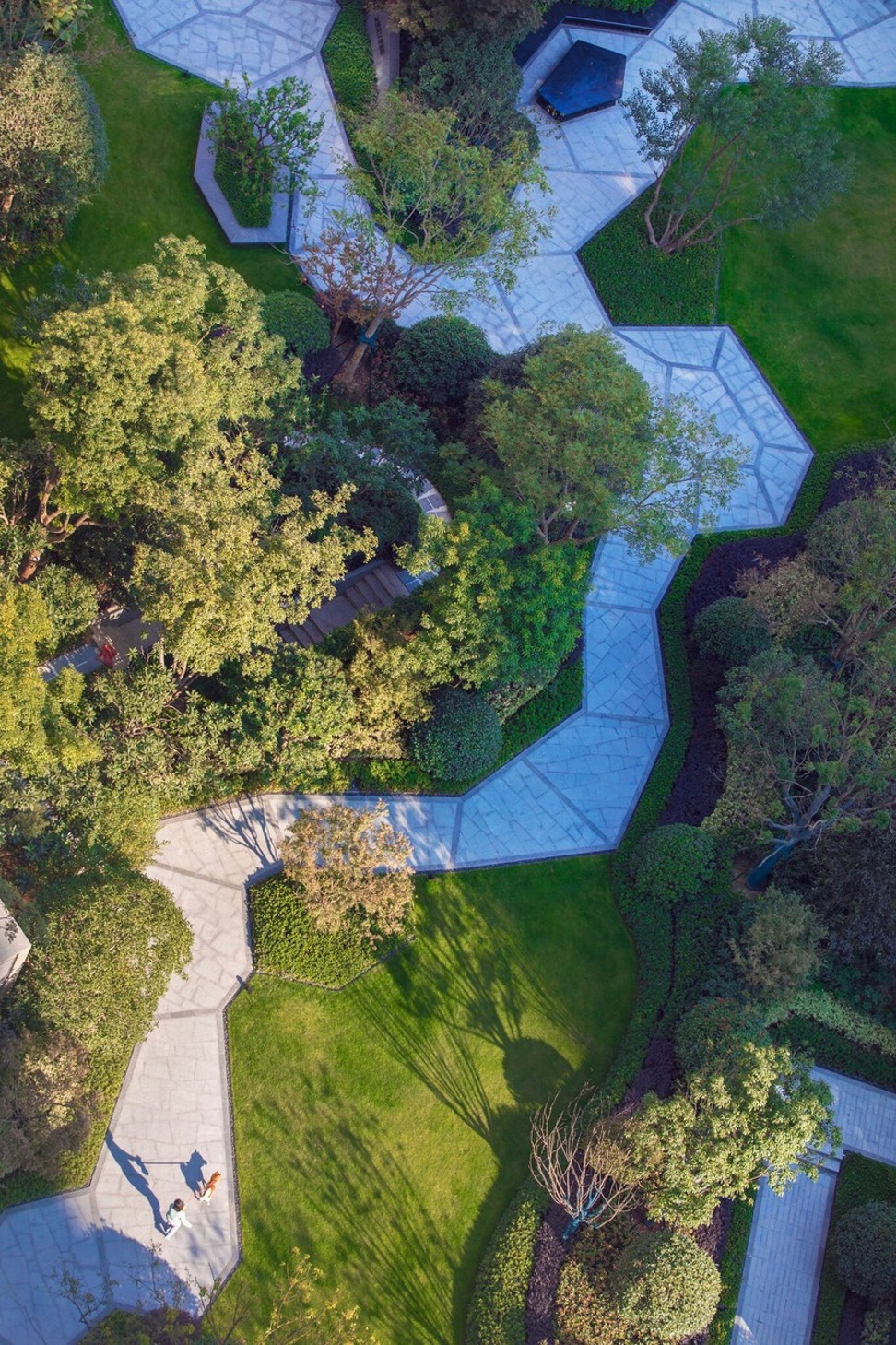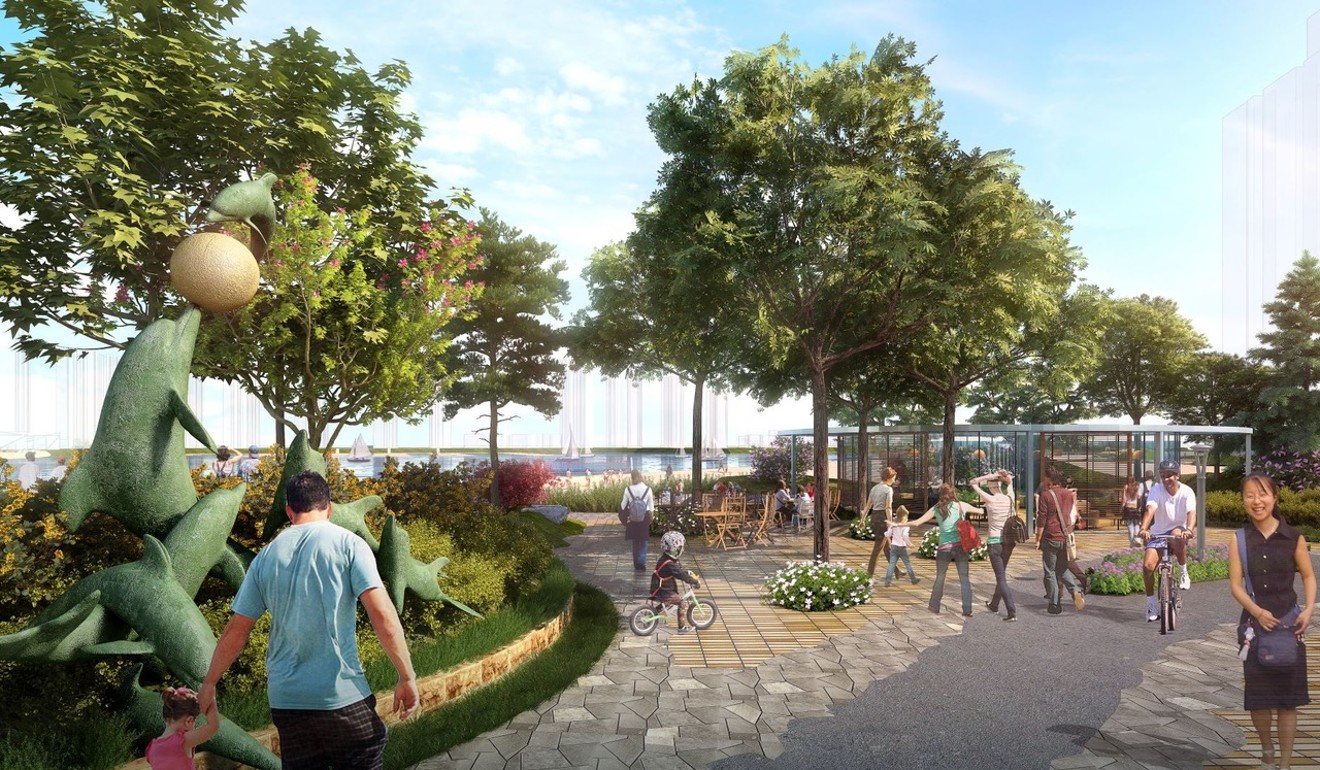
Changing China: luxury living is now about being green and respecting the planet
Clubhouse. Swimming pool. Water garden. Meditation area. Landscape architects find developers, buyers and tenants eager for nature elements in housing estates
In 20 years working on projects in China, landscape architect Scott Slaney has noticed what he describes as “the arc of change”.
True, there is still an overwhelming number of housing developments in densely populated cities designed to accommodate as many people as possible, the buildings themselves “lined up like little soldiers”, he says.
How Singapore has become a garden city, but Hong Kong hasn’t
But then there are the other developments where the opposite is true, where a development has sizeable garden areas, and where, says Slaney, designers are “exploring every possible way to introduce green”.
Slaney is principal of San Francisco-based landscape architecture firm Terrain Studio, founded by Minhui Li, a graduate of the Beijing Forestry University. Terrain is working on, among other projects, the Huangpu River East Bank Conceptual Master Plan in Shanghai, which Slaney describes as a “living waterfront”.
Essentially, he said, the notion is to “create a beautiful natural landscape that people live within”.
While colossal construction projects continue across China, a number of international landscaping practices have found developers of multi-family housing in the country are thinking more about how to integrate elements of nature into spaces, be they grass-filled courtyards, sparkling fountains or meditation gardens.

Inevitably, this applies to higher-end developments geared towards a growing upper class and upper middle class who want recreational amenities that extend beyond clubhouses and swimming pools.
“There is so much value being put on creating a green, park-like environment for residents,” said Peter Yen, senior principal and director of Asia projects at Lifescapes International, a California-based landscape design firm. “Regardless of the chaos, congestion and pollution of the world outside your walls, you’ve got your own park.”
The company has worked on projects such as One Sino Park, in Shanghai, also overlooking the Huangpu River in Shanghai, which features sculpture and water gardens, geometrically shaped pathways, and meditation areas.
At another elaborate multi-family project, Phoenix Palace, in Dalian, northeast China, where the first phase has just been finished, there are native gingko trees, a 14,000-square-foot (1,300 square metre) water garden with pools, fountains and seating areas, and traditional French parterre gardens, their clipped hedges in exuberant patterns swirling over the acreage. (The project is under development by Dalian Hongwei Real Estate.)
There is so much value being put on creating a green, park-like environment for residents
Although the lavish use of garden spaces does appear to be concentrated in more expensive properties, Yen says he has noted a wider assimilation of green ideas within developments in China.
“There’s just the overall idea of it – something that [developers] are trying to do across all levels of properties, the thinking that it’s just one of the things you have to have.”
In some cases, landscape designers working in China are having to think about how to incorporate housing into existing, ecologically rich landscapes. In Xing Han New Town, in northwestern Shaanxi province, Terrain’s Slaney and Li are working on a project that has 42km (26 miles) of parks, waterways and restored ecosystems. These are to be divided into various spaces, with residences incorporated in them.
“The natural resources – the clean water, native grasses, abundant wildlife – are so precious,” said Slaney. “Our idea was, ‘How can we introduce residential developments into this landscape and keep the landscape relatively untouched?’”

The trend is certainly driven by consumer demand, said Claudia Juhre, a senior associate based in Hong Kong for global landscape design firm HOK.
“Bringing contemporary green elements into designs is almost a must in order to attract rental parties or buyers,” she said. As a consequence, she said, she is noticing demand among developers, and buyers and renters, for rooftop gardens, communal spaces, green walls and “any material or measure that makes [them] feel like they are contributing to the environment”.
Projects that Juhre is working on include Gulang Water Town, in Tianjin, northeast China, a mixed-use development incorporating residential and commercial real estate along the seaside. Given the location, Juhre selected plants that thrive in salt water – a move, she said, that was heavily encouraged by local landscapers and the client in order to promote biodiversity. Also in the works are outdoor sculptures, relaxation areas, and playgrounds.
Hong Kong lags behind Singapore, Philippines on sustainable homes
Juhre said that as more developers focus on superior landscaping, the idea of what constitutes “prestigious” housing will continue to change.
“Luxury living is not all about expensive and exclusive any longer,” she said. “It’s also about the conscious [attitudes] towards our planet. This universal trend has taken off in China as much as it has in Western countries. There are a few developers who are morally motivated to follow sustainable concepts.”

